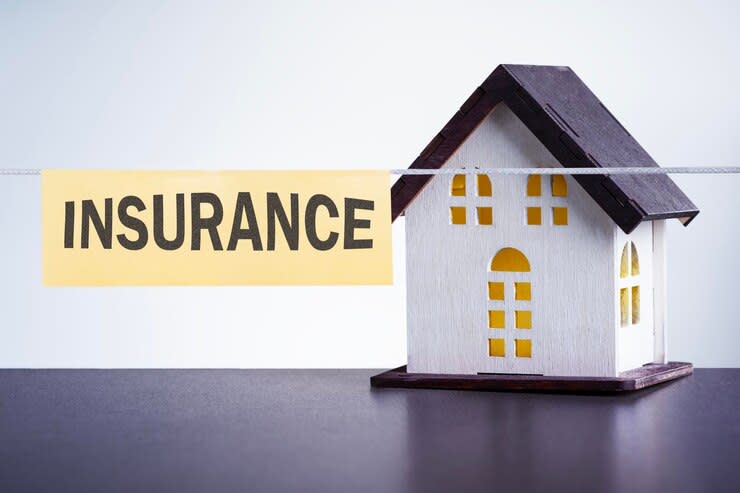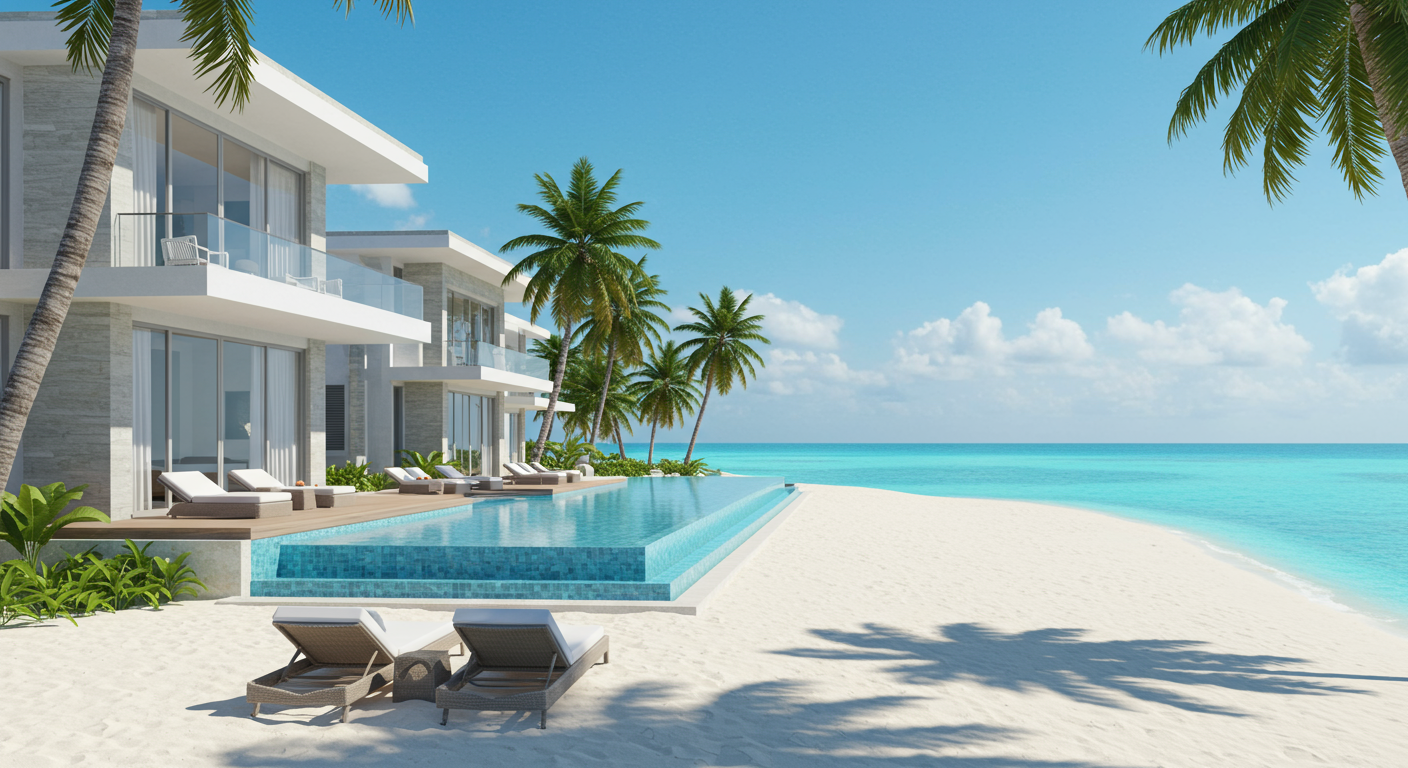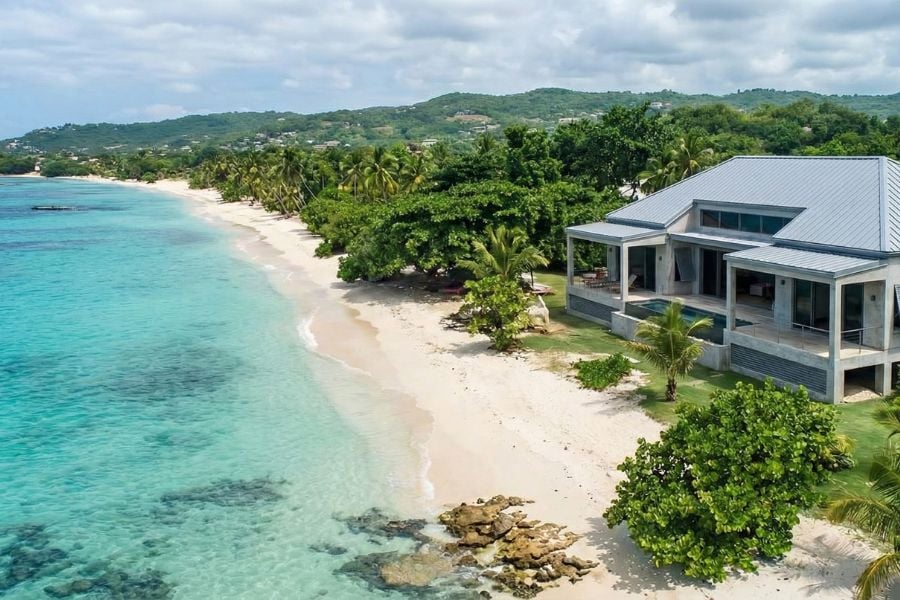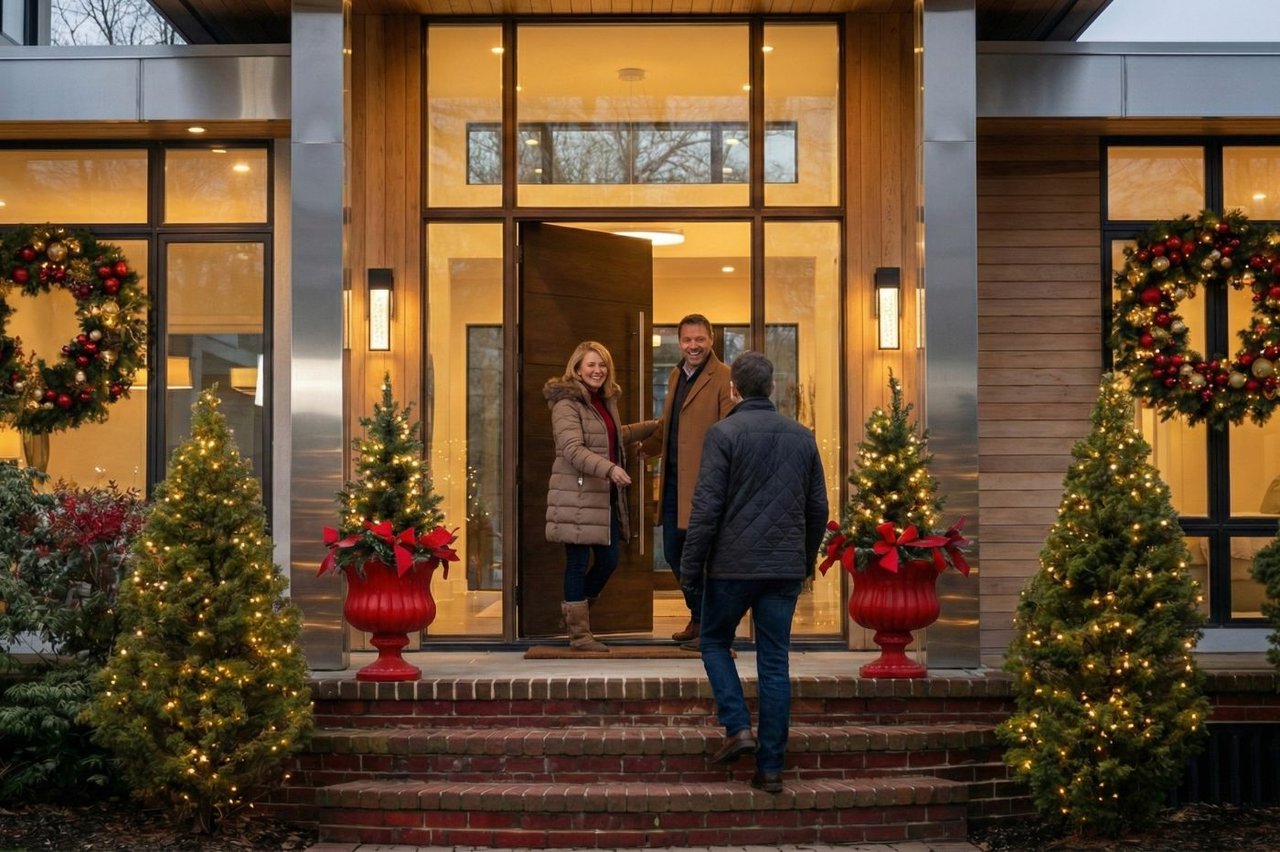Investing in beachfront luxury properties is a distinguished venture, reflecting a strategic alignment of affluence with a discerning lifestyle choice. The seductive proximity to the ocean, offering unimpeded views and the soothing cadence of waves, does, however, introduce a complex array of insurance considerations fundamentally distinct from those associated with inland luxury estates. This differential is not merely geographical but is deeply rooted in the variegated risk landscape that coastal properties inhabit.
Key Takeaways
- Flood, windstorm, and high-hazard homeowners/peril insurance are essential for protecting beachfront luxury properties against specific coastal risks.
- Insurance cost for beachfront properties is influenced by factors such as proximity to the ocean, past weather conditions, and unique property characteristics.
- Risk mitigation measures can significantly reduce insurance premiums by minimizing the property's vulnerability.
- Regular review and comparison of insurance options ensure comprehensive coverage at competitive rates, safeguarding your investment against potential threats.
Key Insurance Types for Beachfront Luxury Properties
Investing in high-value homes, such as beachfront luxury properties, is a statement of both sophistication and an affinity for the serene beauty of coastal life. Yet, the idyllic setting comes with unique challenges, particularly from the insurance perspective. Coastal properties face distinct risks that are less prevalent or absent in inland locations. Recognizing and mitigating these risks through appropriate insurance coverage is paramount in safeguarding such a significant investment.
1. Flood Insurance
Puerto Rico Flood insurance is indispensable for beachfront properties due to their increased susceptibility to flooding. Standard homeowners' policies typically exclude flood damage, rendering specialized flood insurance necessary. Here's an overview of eligibility criteria and how to apply for flood insurance in Puerto Rico:
Eligibility for Flood Insurance
- NFIP Participation: Flood insurance through the National Flood Insurance Program (NFIP) is available in communities participating in the NFIP. Most beachfront areas in Puerto Rico are likely to be in NFIP-participating communities due to the high risk of flooding.
- Property Location: Your property's specific location, including its flood zone designation, affects eligibility and premium costs. Properties located in high-risk flood zones, known as Special Flood Hazard Areas (SFHAs), may have different eligibility criteria and higher premiums.
- Building Compliance: The structure of your property must comply with local floodplain management regulations designed to reduce future flood damage.
Special Flood Hazard Areas (SFHAs)
Special Flood Hazard Areas (SFHAs) are regions designated by FEMA, characterized by their high risk of flooding, mudflows, or flood-related erosion. These areas are identified on Flood Hazard Boundary Maps or Flood Insurance Rate Maps under various zone designations, such as A, AE, V, VE, and others. SFHAs are where NFIP's floodplain management regulations are enforced and where purchasing flood insurance is mandatory for property owners.
AR and A99 zones are considered non-SFHAs when determining Community Rating System premium discounts. This designation affects both eligibility for flood insurance and the cost of premiums, with properties in these areas typically facing higher premiums due to the increased risk.
2. Windstorm Insurance
Given the heightened risk of hurricanes and tropical storms in coastal areas windstorm insurance becomes critical for beachfront property owners. This type of insurance is designed to cover damages caused by high winds, including those from hurricanes and tornadoes, which can lead to significant structural and property damage. In some cases, windstorm damage might be excluded from standard policies in high-risk areas, necessitating adding windstorm coverage or purchasing a separate policy dedicated solely to wind-induced damages.
Eligibility for Windstorm Insurance
Typically, windstorm insurance is necessary if your standard homeowners' insurance policy excludes wind and hail damage, which is common for properties in high-risk coastal regions. Eligibility for windstorm insurance might depend on various factors, including:
- Property's location
- Construction type
- Roof condition, and
- Age
It's also worth noting that if you mortgage your property, your lender might require windstorm coverage to protect their investment.
3. High Hazard Homeowners/Peril Insurance
For risks uniquely associated with living close to the shore—beyond the typical coverage provided by standard homeowners insurance in Puerto Rico—there is high-hazard homeowners or peril insurance. This specialized insurance coverage protects against specific perils that beachfront properties are prone to, which might not be covered under standard policies.
Such perils include but are not limited to coastal erosion, saltwater intrusion, and other environmental factors that can compromise the integrity and value of the property. High hazard or peril insurance ensures the property owner is prepared for these distinct risks, offering peace of mind that the investment is secured against a broader spectrum of potential threats.
Eligibility for High Hazard Homeowners/Peril Insurance
- Location and Risk Assessment: Properties in areas prone to coastal erosion, saltwater intrusion, and other specific environmental threats are eligible. The insurer might conduct an initial risk assessment to determine your property's particular perils.
- Construction and Mitigation Features: The construction details of your property, including materials used and any storm mitigation features installed (e.g., storm shutters, reinforced roofing), may affect eligibility and premium costs.
- Compliance with Local Building Codes: Ensuring that your property complies with local building codes, especially those related to flood and wind resistance, can be a requirement for eligibility.
Understanding Policy Types: HO2, HO3, HO4, and HO6
Understanding the different types of homeowner insurance policies can help you choose the right protection based on your property type and usage. When shopping for home insurance in Puerto Rico, here are the most common policy types you’ll encounter:
| Policy Type | Best For | What It Covers |
|---|---|---|
| HO2 – Broad Form | Traditional single-family homeowners | Covers specific named perils like fire, theft, and windstorms for both structure and belongings. |
| HO3 – Special Form | Most homeowners in Puerto Rico | Offers broader protection for the home structure (open perils) and personal property (named perils). |
| HO4 – Tenant’s Form | Renters | Covers personal belongings and liability but not the building structure. |
| HO6 – Condo Form | Condominium owners | Covers interior walls, fixtures, and personal property, often required by HOAs. |
Puerto Rico insurers like Popular and Triple-S Propiedad offer these policies with localized customization. Choosing the correct form ensures your home insurance in Puerto Rico aligns with your property type—whether you're a homeowner, landlord, tenant, or condo owner.
How to Apply for These Insurances
A meticulous and informed approach is essential as you prepare to secure insurance for your luxury beachfront properties. The following outline delineates the comprehensive steps necessary to navigate the application process for these specialized insurances effectively:
|
How to Apply |
Insurance Type |
Description |
|
Assess Your Coverage Needs |
All |
Evaluate risks specific to your property and decide whether you need coverage as an addition to your high-value homeowners' insurance or as a separate policy. This decision is influenced by the property's location and potential exposure to natural disasters. |
|
Shopping for Insurance |
All |
Options include purchasing through an endorsement to your current homeowners' policy, a standalone policy from specialized insurers, or state-administered insurance pools for those unable to find private insurers. |
|
Contacting Insurance Providers |
All |
Inquire with your current provider about adding coverage or contact insurers offering the specific insurance type in Puerto Rico. Companies like Triple-S and MCS Puerto Rico may have options for Windstorm Insurance. |
|
Application Process |
All |
Likely involves providing detailed property information, including construction, age, and mitigation measures like storm shutters or reinforced roofing. |
|
Consider a Wind Mitigation Inspection |
Windstorm Insurance |
This inspection assesses your home's features and improvements against wind damage, potentially leading to premium discounts. |
|
Check Your Community's Participation |
Flood Insurance |
Verify if your community participates in the NFIP by visiting FEMA's website or contacting local government offices. |
|
Assess Your Risk |
Flood Insurance |
Use tools like FEMA's Flood Map Service Center to understand your property's flood zone and insurance requirements. |
|
Consider Private Insurers |
Flood and High Hazard Homeowners/Peril |
For coverage beyond what the NFIP offers (Flood Insurance) or for specialized high-hazard coverage, contact private insurers offering higher limits or benefits not available through standard policies. |
|
Prepare Necessary Documentation |
High Hazard Homeowners/Peril Insurance |
Provide details on construction, existing mitigation measures, compliance with building codes, and property valuation. |
|
Review Quotes and Policies |
All |
Review the coverage details, exclusions, and premiums in quotes received. Ensure the policy addresses the specific perils your property is at risk for. |
|
Finalize the Application |
All |
Complete the application process by submitting all required documentation and making the initial premium payment. |
Note:
For Flood Insurance: Remember, there is typically a 30-day waiting period from the date of purchase before your flood insurance policy goes into effect, so it's advisable to secure coverage well before flood season or any forecasted storms.
State-Specific Provisions for Homeowners Insurance in Puerto Rico
Puerto Rico enforces key regulations to protect homeowners from financial losses due to natural disasters. These provisions influence homeowners insurance Puerto Rico policies, ensuring affordability and risk mitigation.
Key Provisions and Their Implications
|
Provision |
Details |
Impact on Homeowners |
|
Mandatory Coverage |
Homeowners are required to maintain a basic insurance policy covering fire, hurricanes, floods, and earthquakes. |
Protects against financial losses from natural disasters. Failing to maintain coverage may result in fines or non-compliance issues. |
|
Deductible Cap |
Puerto Rico has set a 5% cap on insurance deductibles based on the insured value of the home. |
Limits out-of-pocket expenses when filing claims. Encourages affordability and accessibility of insurance. |
|
Discounts for Mitigation Measures |
Insurers must provide discounts to homeowners who install hurricane-resistant features such as storm shutters, impact-resistant windows, and reinforced roofs. |
Incentivizes homeowners to invest in property resilience. Reduces insurance premiums over time. |
Why These Provisions Matter?
- They provide a safety net against unpredictable weather events.
- They promote affordability and accessibility of homeowners insurance Puerto Rico.
- They encourage proactive risk mitigation, making properties more resilient.
Factors that Affect Insurance Costs
The cost of beachfront property insurance is influenced by various factors, mainly due to the unique challenges associated with coastal properties. The proximity to the ocean increases exposure to specific risks such as strong winds, salt water, and the potential for floods, all of which can significantly impact the price of insurance coverage. High-value home insurance in Puerto Rico, therefore, becomes a vital consideration for beachfront property owners, offering comprehensive protection that extends beyond the physical structure to include belongings and potential liabilities.
Key factors that affect the cost of beachfront property insurance include:
- Proximity to the Ocean: The closer your property is to the ocean, the higher the risk of damage from coastal threats, leading to higher insurance costs.
- Past Weather Conditions: The history of weather conditions and natural disasters in your area can also affect insurance pricing, with areas prone to hurricanes and floods often facing higher premiums.
- Unique Property Characteristics: Specific features of your property, such as its construction materials, age, and any implemented mitigation measures against coastal risks, play a role in determining your insurance costs and the possible replacement cost coverage.
Tips for Beachfront Property Investors
To effectively manage and reduce insurance costs for beachfront properties consider these strategies:
- Opting for Higher Deductibles: Increasing your deductible can indeed lower your premium costs. This strategy is recommended by insurance experts, as a higher deductible results in lower premiums because you'll be covering a larger share of any loss. However, it's essential to ensure you can afford the higher out-of-pocket expenses in case of a claim.
- Consolidating Policies: Bundling different types of insurance policies can often result in discounts. Insurers may offer price reductions to customers who hold multiple policies, such as homeowners, auto, and flood insurance, through the same insurance company.
- Implementing Risk Mitigation Measures: Taking steps to reduce your property's vulnerability to coastal risks can lead to premium discounts. Measures such as installing storm shutters, reinforced roofing, and other storm-proofing modifications can make your property more resilient to damage from coastal storms, and insurers may reward you with lower premiums.
- Regularly Reviewing and Comparing Insurance Options: It's crucial to periodically review your insurance coverage to ensure it meets your current needs at competitive rates. Markets and available coverages can evolve, making it important to stay informed and consider adjusting your coverage or shopping around for better rates.
Conclusion
In beachfront luxury property investment, recognizing and addressing unique insurance needs is paramount for safeguarding assets against the unpredictable whims of nature. At Christie's International Real Estate Puerto Rico, we possess the expertise and network to not only guide our clients through the complexities of finding, selling, or leasing their dream coastal properties but also ensure they are well-informed about the crucial insurance considerations that come with such investments.
Explore the serene beauty and security of beachfront living with Christie's International Real Estate Puerto Rico. Contact us today to begin your journey.
Related Articles:
- Local Regulations Affecting Construction Companies in Puerto Rico
- The Prestige of Owning Puerto Rico Homes for Sale in San Juan
- Financing a Luxury Real Estate: Do Owners Need to Agree to an Appraisal Contingency?
FAQs
Can beachfront property insurance cover loss of rental income?
Yes, beachfront property insurance can include coverage for loss of rental income. This is especially important for owners who lease their properties as vacation homes. This coverage can compensate for lost income during periods when the property is uninhabitable due to covered damages, such as those from a natural disaster. Discussing this with your insurance provider to ensure your policy includes this protection and understand the terms is crucial.
How does climate change impact insurance rates and coverage for beachfront properties?
Climate change significantly impacts insurance rates and coverage limits for beachfront properties. With the increased frequency and severity of weather events such as hurricanes, floods, and sea-level rise, insurers may adjust rates to reflect the heightened risk. Insurance companies may sometimes even limit or withdraw coverage for high-risk areas.
Property owners should stay informed about climate trends and insurance market responses, potentially exploring additional measures like climate resilience upgrades to mitigate risks and costs.
Are there any incentives for eco-friendly and sustainable beachfront properties in terms of insurance?
Some insurance companies offer incentives or discounts for eco-friendly and sustainable beachfront properties. These incentives are based on the premise that sustainable features can reduce the risk of damage from environmental factors. For example, properties with energy-efficient construction, solar panels, and natural disaster-resistant features may qualify for lower insurance premiums.
It's beneficial to inquire with your insurance provider about green incentives, as they can contribute to long-term savings and environmental sustainability.









